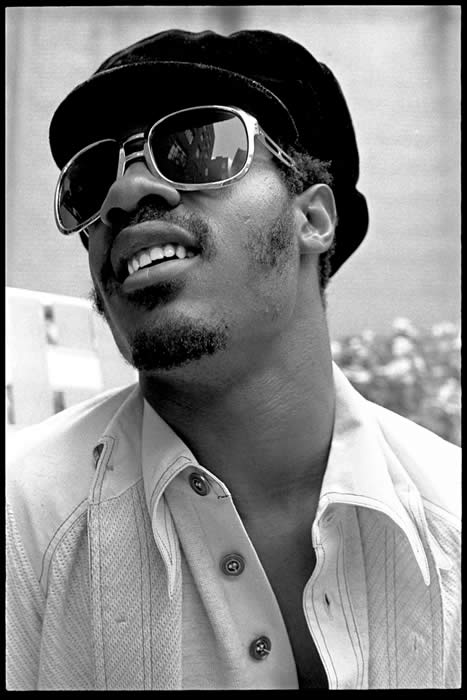
Innervisions is the sixteenth album by American musician Stevie Wonder , released August 3, 1973 on Motown Records; a landmark recording of his “classic period”. The nine tracks of Innervisions encompass a wide range of themes and issues: from drug abuse in “Too High,” through social anger in “Living for the City,” to love in the ballads “All in Love is Fair” and “Golden Lady.”

As with many of Stevie Wonder’s albums the lyrics, composition and production are almost entirely his own work, with the ARP synthesizer used prominently throughout the album. This instrument was a common motif among musicians of the time because of its ability to construct a complete sound environment. Wonder was the first black artist to experiment with this technology on a mass scale, and Innervisions was hugely influential on the subsequent future of commercial black music. He also played all or virtually all instruments on six of the album’s nine tracks, making most of Innervisions a representative one-man band.
[vc_row][vc_column][vc_message message_box_color=”mulled_wine” icon_fontawesome=”fa fa-quote-left”]When Stevie Wonder applied his tremendous songwriting talents to the unsettled social morass that was the early ’70s, he produced one of his greatest, most important works, a rich panoply of songs addressing drugs, spirituality, political ethics, the unnecessary perils of urban life, and what looked to be the failure of the ’60s dream — all set within a collection of charts as funky and catchy as any he’d written before. Two of the highlights, “Living for the City” and “Too High,” make an especially deep impression thanks to Stevie’s narrative talents; on the first, an eight-minute mini-epic, he brings a hard-scrabble Mississippi black youth to the city and illustrates, via a brilliant dramatic interlude, what lies in wait for innocents. …
-John Bush (allmusic.com)[/vc_message][/vc_column][/vc_row]
Stevie Wonder – Innervisions – Promo – In Studio Performances and Interview 1973, released just before the album:
Legacy:
- In 2001, VH1 named it the 31st greatest album of all time
- In 2003, the album was ranked number 23 on Rolling Stone magazine’s list of the 500 greatest albums of all time.
The magazine wrote on that occasion:
[vc_row][vc_column][vc_message message_box_color=”mulled_wine” icon_fontawesome=”fa fa-quote-left”]
[/vc_message][/vc_column][/vc_row]
Higher Ground, Live 1974:

Living for the city – Live 1974:
Album of the day, Innervisions:
[vc_row][vc_column][vc_separator][vc_btn title=”Alldylan / Borntolisten @ Facebook” color=”blue” i_icon_fontawesome=”fa fa-facebook-official” add_icon=”true” link=”url:https%3A%2F%2Fwww.facebook.com%2FJohannasVisions%2F||target:%20_blank|”][/vc_column][/vc_row]
– Hallgeir & Egil
